
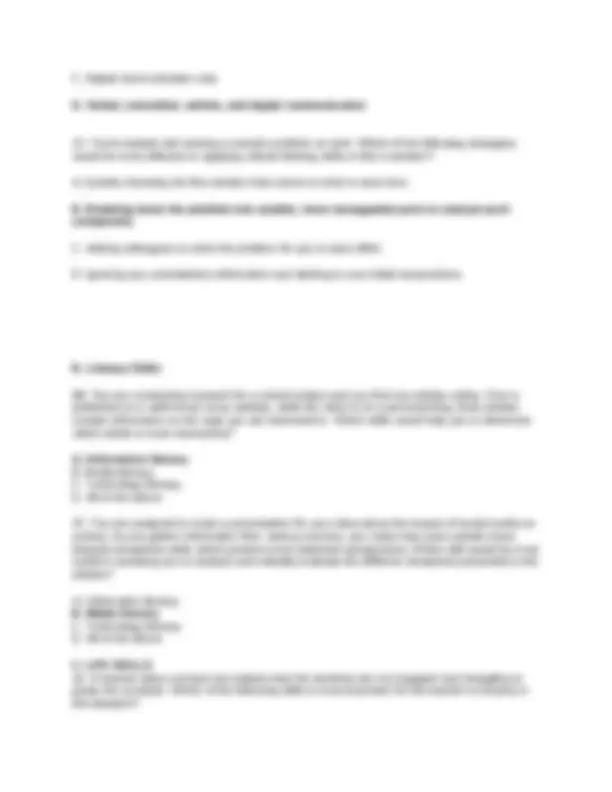
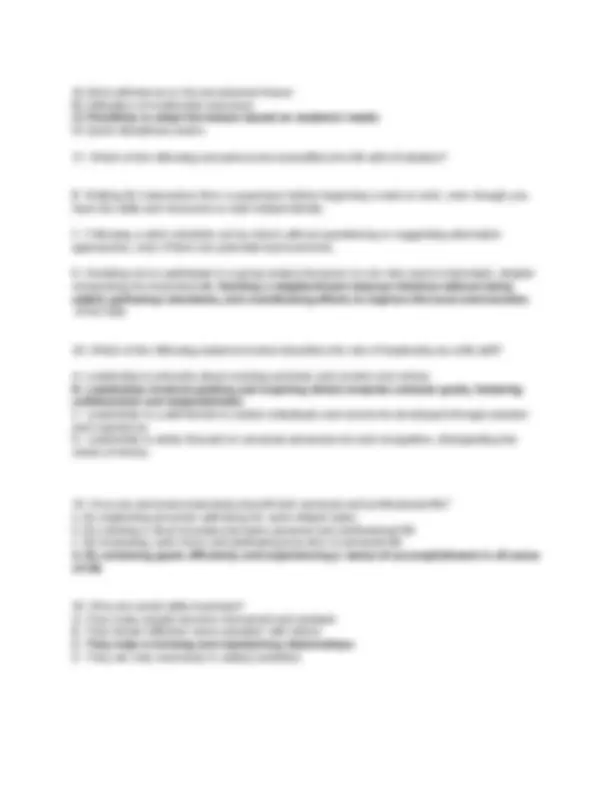
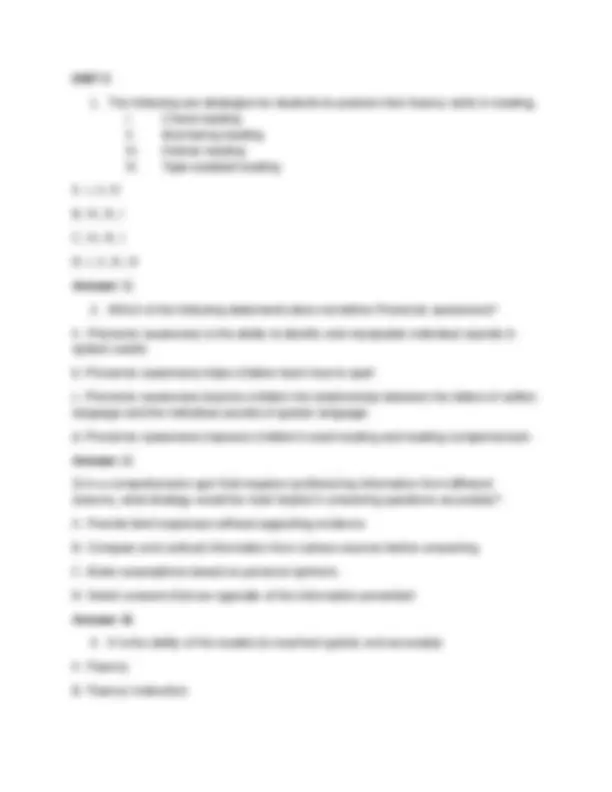
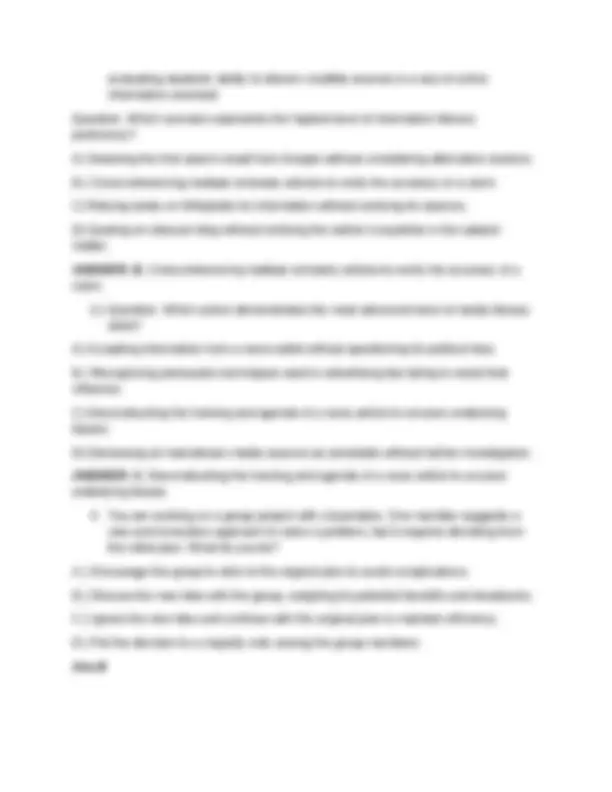
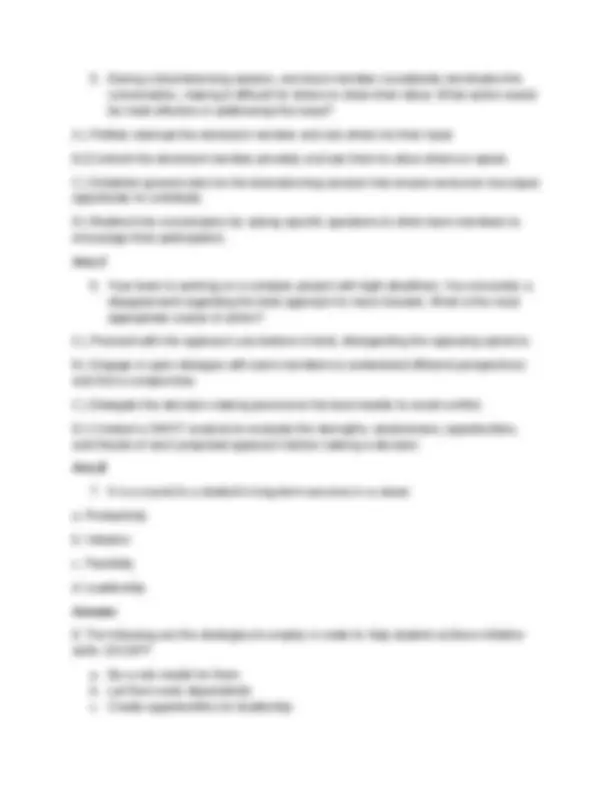
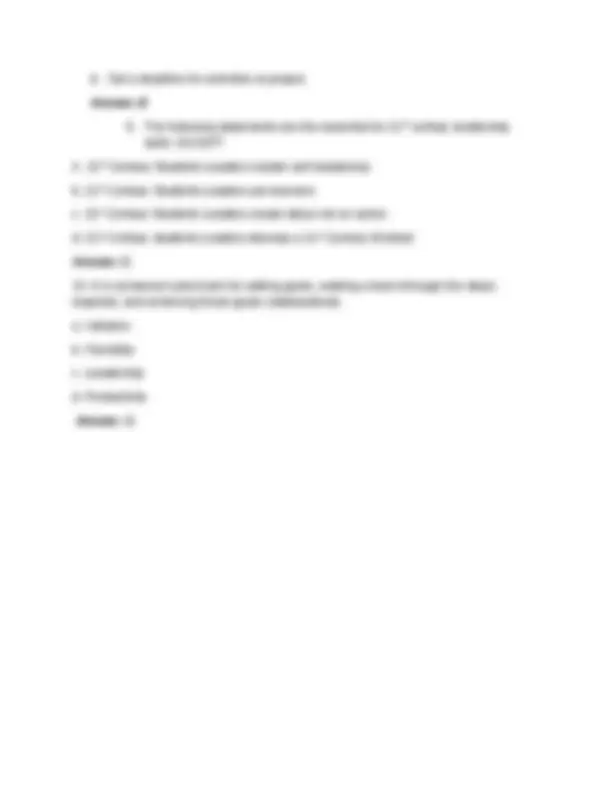


Study with the several resources on Docsity

Earn points by helping other students or get them with a premium plan


Prepare for your exams
Study with the several resources on Docsity

Earn points to download
Earn points by helping other students or get them with a premium plan
Community
Ask the community for help and clear up your study doubts
Discover the best universities in your country according to Docsity users
Free resources
Download our free guides on studying techniques, anxiety management strategies, and thesis advice from Docsity tutors
An in-depth exploration of the five pillars of beginning reading skills and teaching resources, focusing on phonemic awareness, fluency instruction, collaborative instruction, phonics instruction, and comprehension instruction. It also delves into the importance of vocabulary, 21st century literacy skills, and the role of collaboration in the classroom. The document further discusses the comprehensive nature of effective communication, critical thinking skills, information literacy, media literacy, technology literacy, and life skills.
Typology: Summaries
1 / 10

This page cannot be seen from the preview
Don't miss anything!







Unit 2: B. Beginning reading skills and teaching resources
D. 21st Century literacy skills and teaching resources
A) Strict adherence to the pre-planned lesson B) Utilization of multimedia resources C) Flexibility to adapt the lesson based on students' needs D) Quick disciplinary action
C) “Students should take ownership of their learning and leadership.” D) “Structured routines and procedures should be minimized to encourage spontaneity.” Ans. C
evaluating students’ ability to discern credible sources in a sea of online information overload. Question: Which scenario represents the highest level of information literacy proficiency? A) Selecting the first search result from Google without considering alternative sources. B.) Cross-referencing multiple scholarly articles to verify the accuracy of a claim. C) Relying solely on Wikipedia for information without verifying its sources. D) Quoting an obscure blog without verifying the author’s expertise in the subject matter. ANSWER: B. Cross-referencing multiple scholarly articles to verify the accuracy of a claim. 3.) Question: Which action demonstrates the most advanced level of media literacy skills? A) Accepting information from a news outlet without questioning its political bias. B.) Recognizing persuasive techniques used in advertising but failing to resist their influence. C) Deconstructing the framing and agenda of a news article to uncover underlying biases. D) Dismissing all mainstream media sources as unreliable without further investigation. ANSWER: C. Deconstructing the framing and agenda of a news article to uncover underlying biases.
d. Set a deadline for activities or project. Answer. B